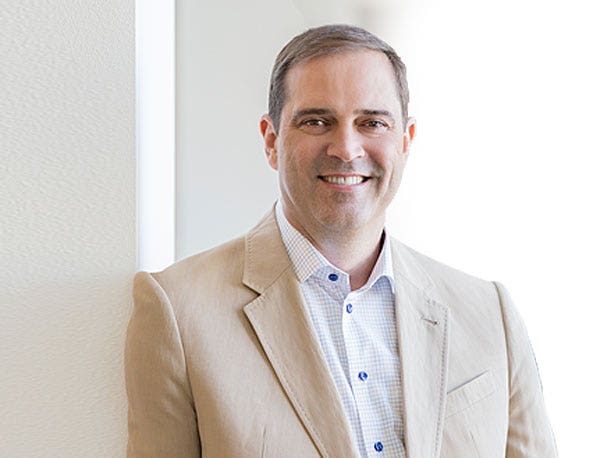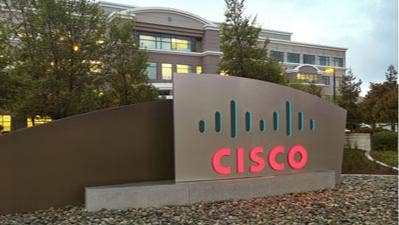Chuck Robbins' Five Bold Statements On Cisco's Software Revolution
Fresh from reporting Cisco Systems' biggest sales quarter ever, Chairman and CEO Chuck Robbins says the strength of the networking giant's channel partners accounts for the lion's share of the company's success in its transition to a software-focused, recurring revenue-based strategy.

Chuck's Channel
Cisco Chairman and CEO Chuck Robbins clearly sees a broad set of opportunities for partners as the networking giant continues its transition to a software and subscription-focused, recurring revenue-generating business model and he's forceful in his commitment to the channel as those changes take hold.
In an interview with CRN after reporting record revenue for the fourth quarter, Robbins doubled down on the idea that the channel can play just as large a role in the transition to a new multi-cloud, software-focused business model as it has in Cisco's traditional business.
Robbins' channel strategy is central to Cisco's ability to drive growth in the disparate components of customers' digital transformation initiatives, and it also means huge opportunity for partners that make the transition with Cisco, Robbins said.
Here are five of Robbins' boldest statements from his conversation with CRN.

Partners play a huge role in Cisco's transition to a recurring revenue and software subscription-based business model."One of the things we talk to our teams about is that as we make this transition to more SaaS and software subscription offers, I've told them I don't know how you're going to do it, but you're going to do it with our partners," Robbins said. "As we've opened up this whole new model and the API structure on top of our networking platforms, it really gives our partner community an opportunity for entirely new profit streams and, frankly, new opportunities to drive their own intellectual property on top of the platforms, which is another way they'll maintain sustained profitability for the long term."

He believes in the strength and resilience of the channel and its ability not only to make broad transitions in a rapidly changing market, but to lead those transitions.
"I've been in this space with the partners for a long time," Robbins said. "What they've shown is that there's clearly an understanding that as the market changes, they have to evolve their business models. The business model and the offer type of transition is something new, but they've shown the same level of resilience in making that transition. We work so closely with our partners that they actually help us define the programs we need to actually make this work. We don't go off in rooms and come out and unveil something that hasn't been vetted pretty deeply with a strategic set of partners to make sure we get it right. We won't always get it right. When we don't, we fix it."

He expects more, and deeper relationships with the industry's leading public cloud providers. Partner programs will evolve as a result.
"One of the core drivers of our overall strategy is the multi-cloud transition," Robbins said. "By definition, that means we're going to build solutions that allow our customers to apply security and policy and traffic management to whatever cloud service they choose. We'll continue to evolve our offers and expand partnerships where it makes sense. You can assume that we will want to offer the most robust set of capabilities that we can. With the cloud providers, many of them have channel programs today that we can integrate with, and they can integrate with ours and it's pretty natural. Others are in the early days of figuring it out, and in that case we can help them think through how they're going to do it. There won't be one answer, but there is a recognition even by them that this is a partner play in the future, which is good because that plays to a historical strength for us."

Customers' journey to a multi-cloud, hybrid-cloud environment is a goldmine for solution providers.
"As our customers broadly adopt this multi-cloud environment, they're rearchitecting how they build IT infrastructure," Robbins said. "That's a combination of automation, orchestration, SD-WAN, analytics, deep security, hybrid cloud enablement. The end state is very attractive. The road from where we are today to the end state is a tremendous opportunity for our partners. Helping our customers think about how they do that; writing applications on top of the infrastructure that help customers do that on top of platforms that are out there; understanding the different cloud services and helping customers make decisions -- there's a broad-based set of opportunities out there for our partners."

Cisco's security strategy is coming into its own and is positioned to meet customer demands for a rapid, aggregated, cloud-based solution.
"We think that the security architecture over the next few years is going to transition, and we feel like we're pretty well positioned," Robbins said. "There are customers at different phases of that transition, but over time this broad-based architecture that's anchored in the cloud is going to be the right play. Having an aggregated architecture where all of the threats from any place, whether it's endpoint, network, cloud, email -- when you can aggregate all those threats into the cloud and do a very rapid correlation and then dynamically defend for your customers, that's the right play and that's where we're headed."